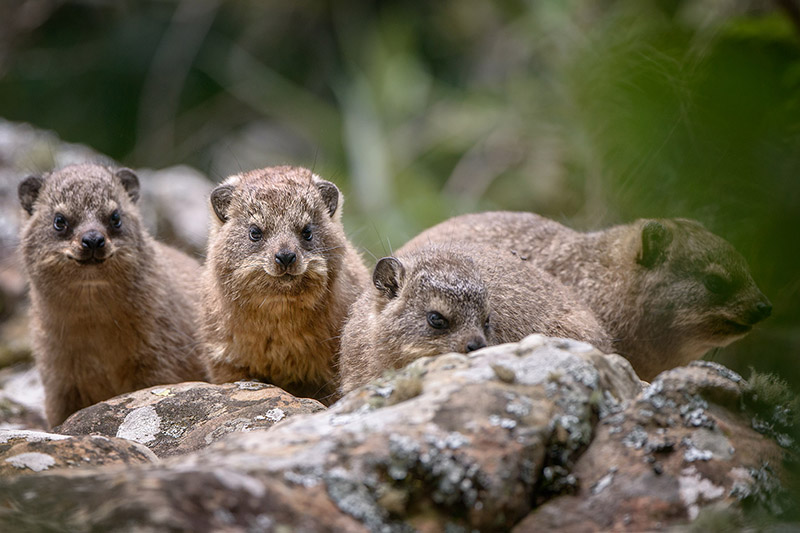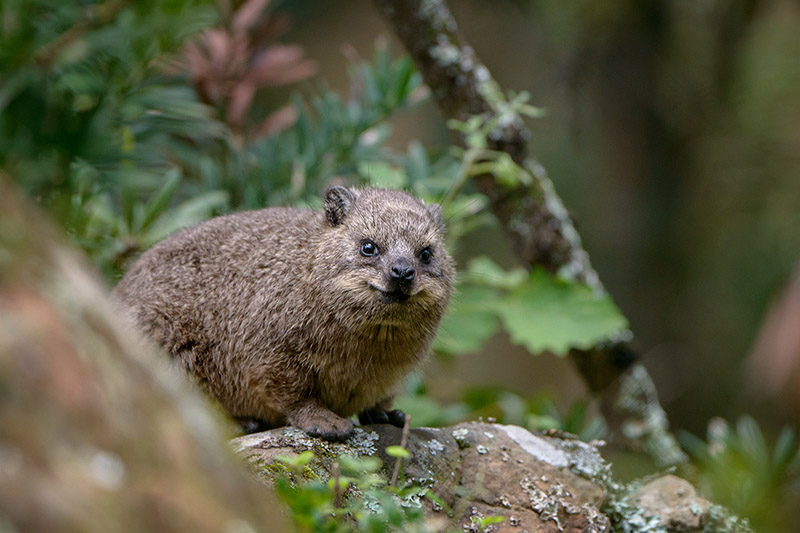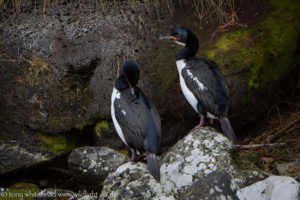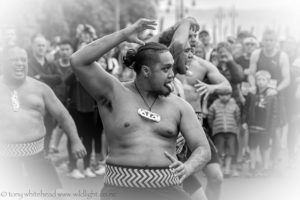There is a group of Dassies (Rock Hyrax) who are very acclimated to humans living near the path out from the Giants Castle village. When walking with Edin, it doesn’t matter how late you might be, a stop to watch and photograph them is mandatory due to their overwhelming cuteness factor which adds a few extra smiles to the day.
Hyraxes have some interesting anatomy and physiology. The trivia fact that they are closely related to elephants has some basis (although the proximity of their relationship is similar to our relationship to Tree Shrews) The most obvious similarity is that both elephants and hyraxes share hollow, constantly growing upper incisor tusks, but they also both lack gall bladders (as do manatees and dugongs) and share a similar foot structure. Unlike elephants, hyraxes have an uncommon quality for mammals, in that they have difficulty maintaining body temperature. As a result they need to be able to bask in sun to raise temperature and hide in shade to lower it. This sun basking exposes them to predation from raptors and has resulted in interesting evolutionary changes in their eyes resulting in a kidney shaped iris which shades part of the retina (like the peak on a cap) and allows them to look into the sun and pick up raptors flying toward them out of the sun. For more interesting facts about the birds and mammals of Southern Africa, I highly recommend Trevor Carnaby’s Beat About The Bush series of books which I discovered during our trip and had to purchase both the Bird and Mammal editions despite planning to avoid book purchases to keep luggage weights down!



